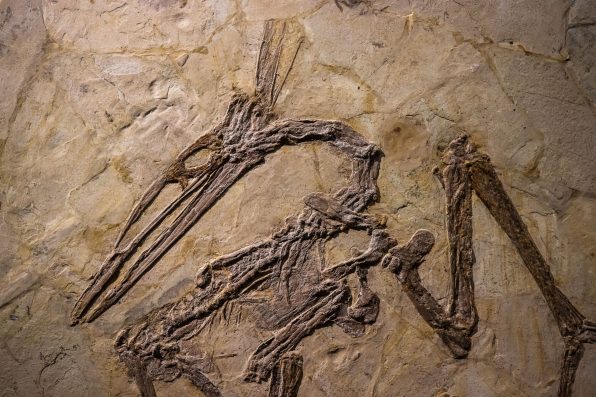In Australia, a farmer and museum curator discovered a new species of pterosaur, a flying reptile that lived among the dinosaurs about 100 million years ago.
Kevin Petersen, an avocado farmer and the curator of Kronosaurus Korner Fossil Museum in Richmond, Australia, first found the fossilized bones in western Queensland back in 2021.
The remains have been identified as Haliskia peterseni, a new genus and species of anhanguerian pterosaur, according to a team of researchers from Curtin University in Perth. Pterosaurs lived during the age of dinosaurs, between the Late Triassic and the conclusion of the Cretaceous period.
They came in all different sizes and possessed various features, from small, bird-like creatures to large predators with lengthy wingspans.
Anhanguerians were known to inhabit the regions that are now England, Brazil, Morocco, China, Spain, and the United States. The new specimen was identified based on the skull shape, the arrangement of teeth, and the bone structure of the shoulder.
“With a wingspan of approximately [15 feet], Haliskia would have been a fearsome predator around 100 million years ago when much of central western Queensland was underwater,” Adele Pentland, a doctoral student at Curtin’s School of Earth and Planetary Sciences and the leader of the study, said.
Pterosaurs were the first creatures to develop flight abilities. They had hollow bones and elongated fingers that helped them support their wing membranes. Their diets consisted of fish, small vertebrates, and invertebrates.
Haliskia would have hunted in the inland sea for fish and cephalopods that resembled squids. When it came time to lay eggs, it likely would have needed to go onto land. Large marine reptiles, such as Kronosaurus, would have preyed on it.
Petersen took great care with the remains. He ended up finding the most complete specimen of any pterosaur from Australia, with 22 percent of the fossil intact. It includes “complete lower jaws, the tip of the upper jaw, 43 teeth, vertebrae, ribs, bones from both wings and part of a leg,” according to Pentland.

Sign up for Chip Chick’s newsletter and get stories like this delivered to your inbox.


